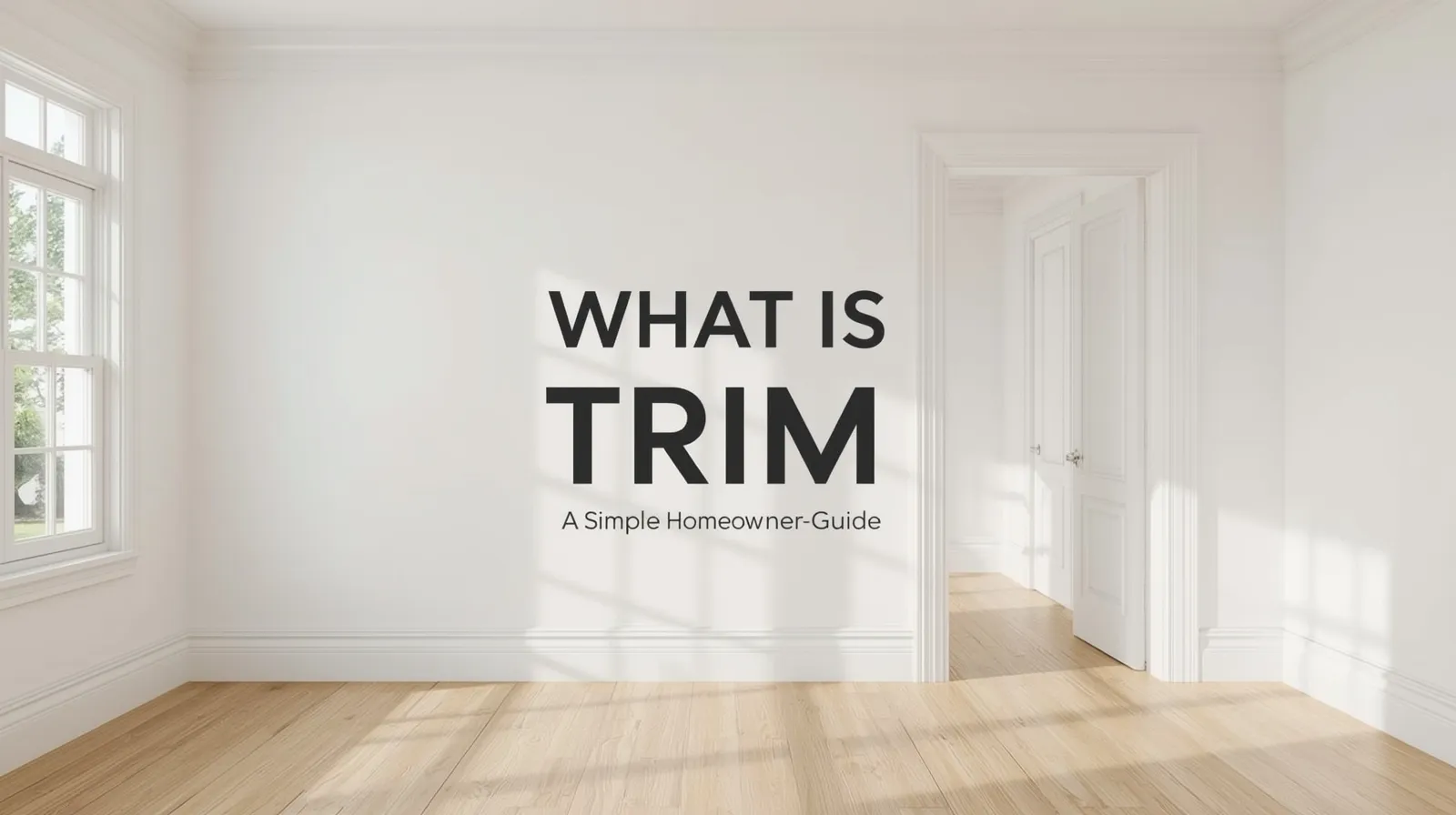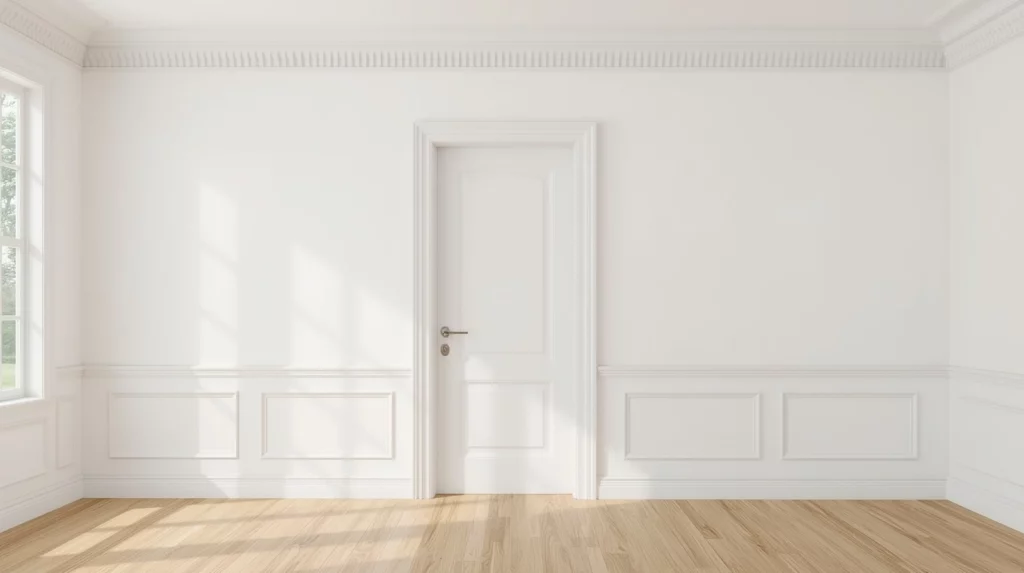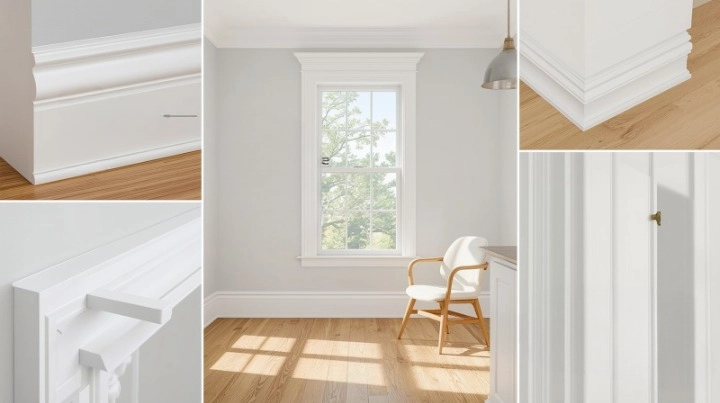
24 Nov What Is Trim, The Underrated Detail That Adds Value
Trim is the material that frames doors, windows, floors, and ceilings. It covers gaps, adds strength, and makes a home look clean and finished. That is the clear answer to what is trim. Homeowners often get confused because trim, moulding, and baseboards look similar, but each one has a different job. In this article, you will learn how trim works, the types you see in most houses, and how it helps improve the look and value of your living space. This guide also includes real examples, expert tips, and advice from CK’s Windows & Doors.
What Is Trim and Why It Matters for Every Home
Trim is a simple word, but it plays a huge part in how a home looks. Trim is the material that borders many areas inside a house, such as around windows, along the floors, around doors, and even near the ceiling. When people search for what is trim, they usually want to know two things: what it does and why it is needed.
Trim covers rough edges and small gaps that appear where two surfaces meet. For example, the wall and the floor never line up perfectly. Trim hides this gap so everything looks neat and smooth. Trim also adds style, giving a clean finish that makes rooms feel more polished. Without trim, every corner, edge, and opening would look plain and unfinished.
Because trim comes in many shapes and sizes, it can match any design. Some trim styles are very simple. Others are more detailed and decorative. But all trim has the same main job, which is keeping your home looking clean and complete.
How Trim Shapes the Look and Feel of Your Living Spaces
Trim changes the way a room feels without needing big changes. Even small trim can make a space look sharper and more put together. Rooms with nice trim look more warm and welcoming because trim adds visual lines that help guide the eye. These lines help make a room feel taller, wider, or more balanced depending on how it is used.
Trim also helps tie together different parts of a room. For example, floor trim, also called baseboards, connects the floor and walls. Door trim connects the walls to entryways. Window trim ties together the frame and the wall. When all these pieces match, the room looks complete.
Trim also protects the home. Sometimes chairs bump into the wall. Kids drop toys or drag things across the floors. Trim handles these small hits better than paint or drywall can. Over time, trim keeps your walls and openings in better shape.
The Basics Behind Trim and Moulding Explained
Trim and moulding are often used together because they are related. Trim is the larger category. It includes baseboards, door casings, and window casings. Moulding is a decorative style of trim. Moulding often has curves, shapes, or patterns added to it for style.
So, trim is the general word, while moulding refers to the detailed parts. This is why people look up terms like trim vs moulding or moulding vs trim. It is not wrong to call all of it trim, but moulding is the fancier version. When you understand the difference, choosing the right style for your home becomes easier.
Trim vs Moulding, How They Differ and When Each One Helps
Many homeowners wonder about trim vs moulding because stores show both words. The difference is simple. Trim is used for function, while moulding is used for decoration. You use trim to cover seams, close gaps, and protect the edges of walls and doors. You use moulding when you want something to look special or elegant.
For example, crown moulding sits at the top of the wall where it meets the ceiling. This type of moulding is mostly decorative. Baseboards, however, are functional trim because they protect the wall and hide the bottom edge.
Both trim and moulding can be used together to create a layered look. If someone wants a more modern and clean style, they may choose simple trim only. If someone wants a detailed or classic look, they choose more moulding.
Types of Moulding Trim Homeowners See Most Often
There are many types of moulding trim, and each style has its own purpose. Some are small and simple. Others have many curves and details. Here are common kinds you will see inside homes:
Crown moulding
Used at the point where walls and ceilings meet. This adds height and elegance to a room.
Baseboards
These run along the bottom of the wall where the wall meets the floor. They make the room look neat and protect the wall from scuffs.
Door and window casings
These frame the edges of windows and doors and hide any gaps.
Chair rail moulding
Installed halfway up a wall to protect the surface from furniture.
Picture frame moulding
Placed on walls to create square or rectangular designs.
These are the most common moulding trim types you will see in homes. Some homes have only a few. Others use many to create a stronger style theme.
Baseboards, Casings, and Crown Pieces, What Makes Each Unique

Baseboards, casings, and crown moulding are the main pieces used in most interiors. Each piece has a different role.
Baseboards are the trim at the bottom of the wall. They give rooms a clean line along the floor and make flooring transitions look smooth.
Casings go around doors and windows. They hide uneven edges and create a frame that makes openings look more structured.
Crown moulding sits at the top of the wall. It creates a nice border between the ceiling and the wall. In some rooms, crown moulding makes ceilings look taller and adds a more finished look.
Each type of trim has a job and a style. When all pieces match, the whole home feels balanced.
How to Tell the Difference Between Trim and Baseboards
Baseboards are a type of trim, but not all trim is baseboard. The main difference is location. Baseboards only run along the bottom of the walls. Trim, on the other hand, can be anywhere. It can be around windows, doors, ceilings, or floors.
Many homeowners mix up the terms because baseboards are the most common trim used in homes. But knowing the difference helps when you need repairs or upgrades.
A simple test is to look at the position. If it touches the floor, it is a baseboard. If it frames something or borders another part of the wall, it is trim or moulding.
Door Casing vs Trim, A Quick Homeowner Friendly Breakdown
Door casing is also a type of trim. It is the specific trim that frames the door. It hides the space between the wall and the door frame. Door casing also adds strength where the door swings open and closed, helping protect the wall.
Trim is the broader category. Door casing is one form of it. If you picture a door without casing, it would look plain and unfinished. Casing gives the doorway shape and makes it look complete.
When homeowners update trim, they often start with door casings because this area makes a strong first impression.
Real Examples of Trim and Moulding Used in Everyday Homes

You see trim every day, even if you do not notice it. Walk into any room and look at the bottom of the walls. The boards running along the floor are baseboards. Look around a window. That border is the casing. The little edge near the ceiling may be crown moulding. These parts blend into the home so well that they feel natural.
In older homes, trim may be wide and detailed. In newer homes, trim might be flat and simple for a modern look. Each choice creates a different mood. Some people choose large trim to make rooms feel bold. Others choose small trim to create a calm style.
The great thing about trim is that it works in every home and every style. You can keep it simple or make it fancy. Either way, trim helps complete the room.
Why Quality Trim Installation Improves Your Home’s Value in Idaho Falls
Trim has a big impact on how a home looks and feels. When it is installed well, it can make even an older home look fresh. Good trim work adds value because buyers notice clean lines, strong edges, and smooth transitions between walls, floors, and ceilings.
Trim also protects the structure of the home. It keeps walls safer from dents and dings. It covers gaps that could collect dust. And it creates a more put together look that helps a room feel more complete.
When trim is chosen and installed with skill, the whole home looks upgraded, which is why many people replace trim before selling.
Why CK’s Windows and Doors Is the Trusted Choice for Trim Services
CK’s Windows & Doors has the knowledge and experience to install trim the right way. We focus on clean cuts, smooth edges, and a perfect fit for each room. Trim should not just look good for a day. It should last for years, and that comes from careful work and quality materials.
Our team guides homeowners through trim types, moulding styles, and design choices. We make sure every room gets the right look. CK’s Windows & Doors also focuses on honest advice and reliable service so you always know what to expect.
If you want your home to look clean, finished, and well designed, trim is one of the easiest upgrades you can make. A small change can have a big effect on the whole room.
Ready to upgrade your home trim? Contact us today for a simple and friendly consultation. We make the process easy, clear, and stress free.

